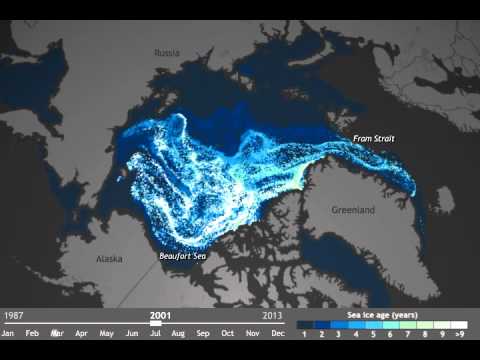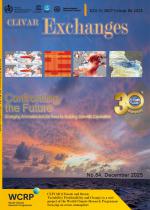Old ice in Arctic vanishingly rare

Each winter, sea ice expands to fill nearly the entire Arctic Ocean basin, reaching its maximum extent in March. Each summer, the ice pack shrinks, reaching its smallest extent in September. The ice that survives at least one summer melt season tends to be thicker and more likely to survive future summers. Since the 1980s, the amount of this perennial ice (sometimes called multiyear) has declined.
The recent condition: In September 2012, Arctic sea ice melt broke all previous records. Melt was less severe in 2013 and 2014. According to the 2014 Arctic Report Card, the less extreme melting provided an opportunity for a bit more first-year ice to become perennial ice.
While perennial ice increased between 2013 and 2014, the long-term trend continues to be downward, the Report Card authors stated. In 1980s, the oldest ice (fourth-year ice and older) comprised 26 percent of the ice pack; as of March 2014, it was 10%. And as the animation above shows, very old ice (say, 7-8 years or older) has become even more rare. read more http://www.climate.gov/news-features/videos/old-ice-arctic-vanishingly-r...










